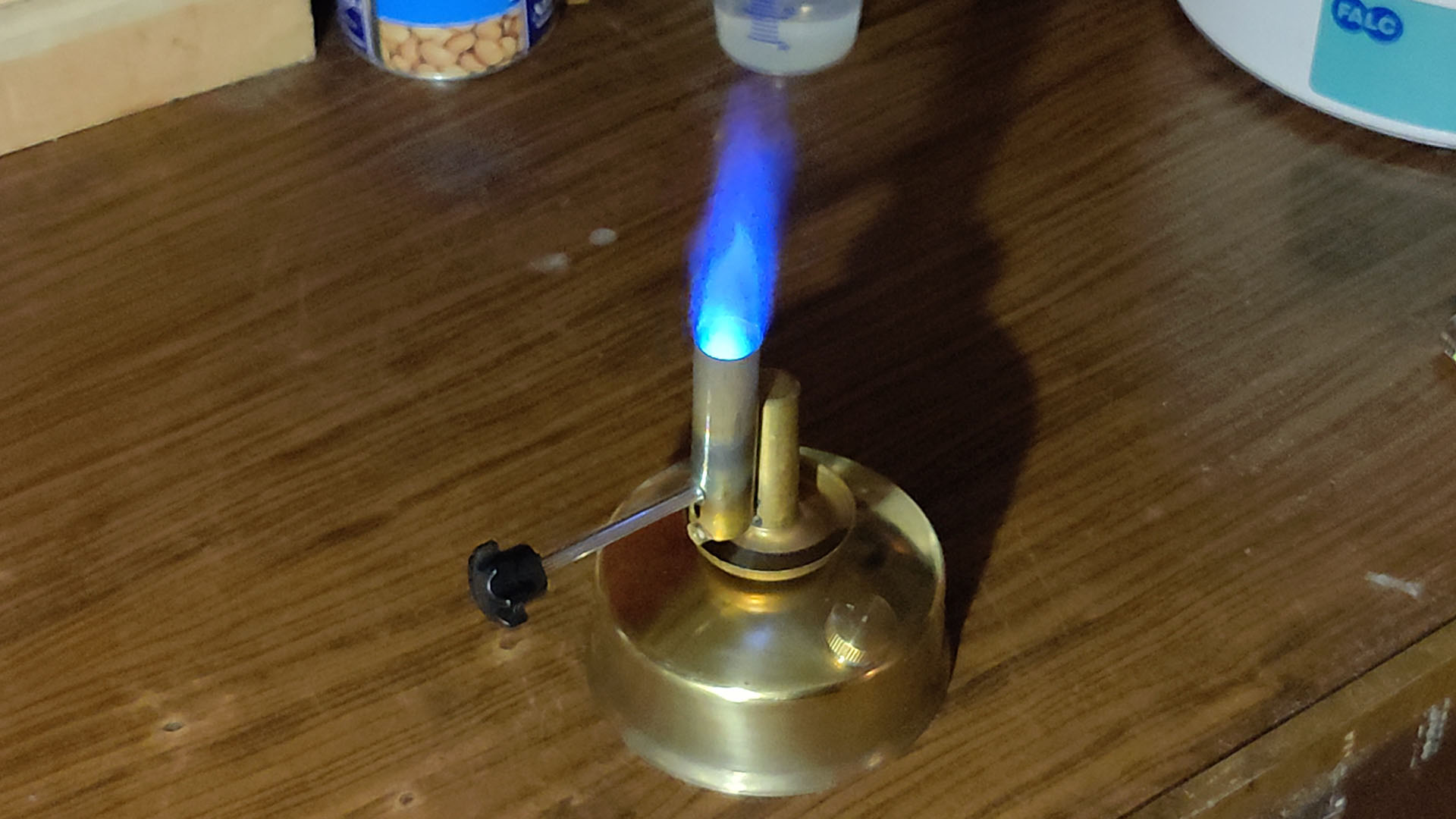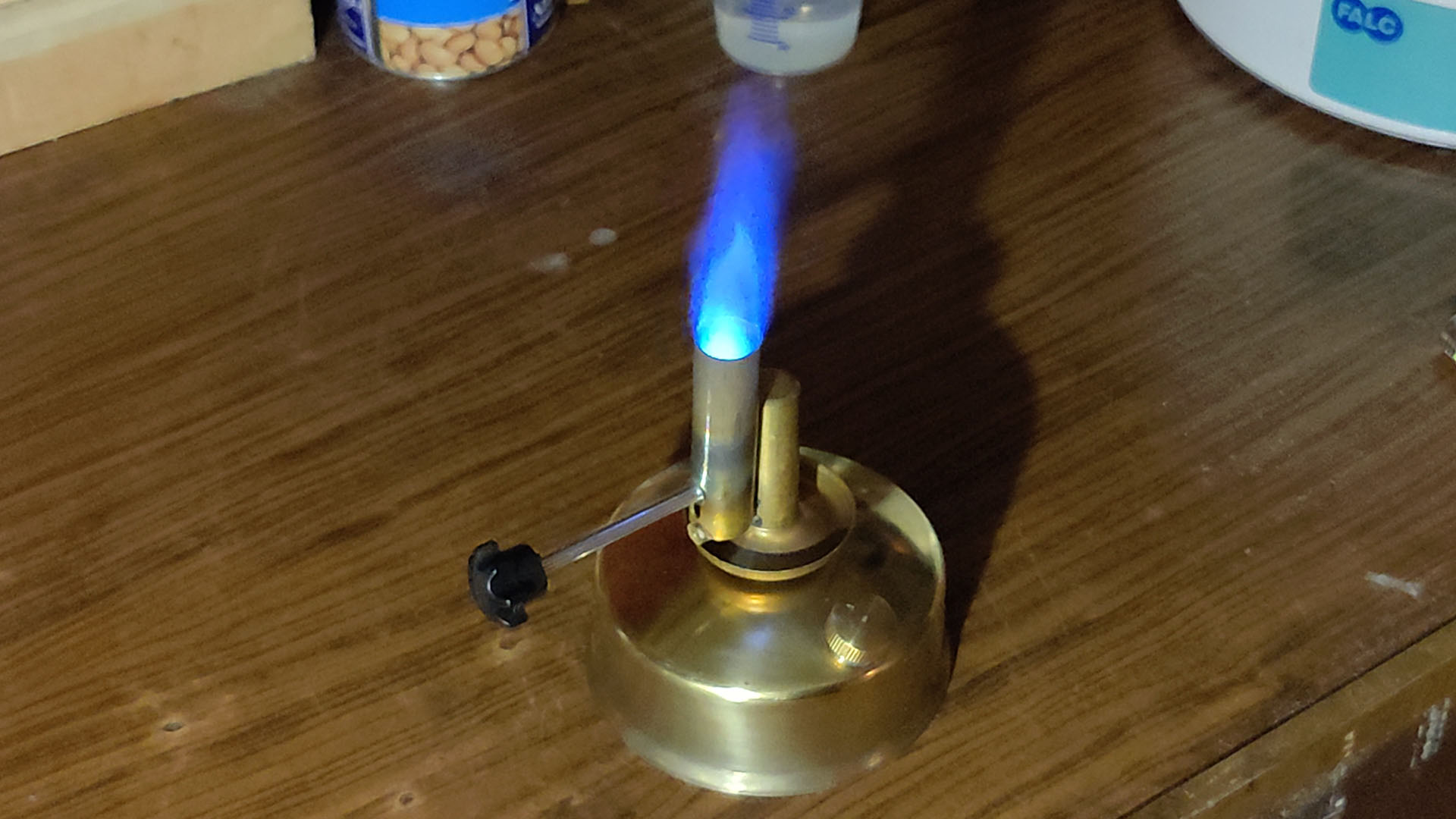

In this article, I would like to talk about a tool, the Tandou torch, whose existence I have only known for a short time, but which immediately fascinated me (I have always felt a bit of a pyromaniac).
The Tandou torch is a kind of high-performance alcohol stove that exploits the vapor of self-pressurized ethanol.
In common alcohol stoves, what "burns" is a wick soaked in ethanol. In order to provide a constant supply of fuel to the flame, it is kept immersed in a tank, and comes into contact with the outside only at the top end.
Clearly, the wick must be long enough to be able to "fish" even on the bottom of the tank. By capillarity, the alcohol goes up the wick to the part exposed to the flame so as to keep it always fueled.
The Tandou burner has components common to the classic stove: it has a tank for ethanol and a wick.
The substantial difference, however, lies in the principle of operation: the end of this wick is not exposed as in the traditional stove, but is "enclosed" inside a brass cylinder. The alcohol, therefore, does not directly fuel the flame.
In reality, it is heated and brought to evaporation. The alcoholic vapor tends to escape from a special nozzle with an increasingly sustained pressure: the more the system heats up, the more vapor is generated and, since the only possible escape route is through the nozzle (while everything else is hermetically sealed), as we can well imagine, a real jet of pressurized alcoholic vapor is created.
The latter fuels the flame and this, in turn, keeps the system at temperature allowing the continuous evaporation of the alcohol drawn from the wick.
We can easily guess that: as long as there is alcohol inside the tank, the flame remains fueled.
Another interesting feature of the Tandou burner is that above the nozzle we find a second tubular cylinder. This is welded to the central cylinder (the one containing the wick), allowing optimal heat transfer from the flame to the wick itself, so as to facilitate the heating and evaporation of the alcohol. This second cylinder, however, is not hermetic: in reality, it allows a good air flow from the bottom. In this way, the flame is oxygenated very effectively.
Another element that is inserted in the second tubular (just above the nozzle) is an adjustable reduction ring that creates a sort of "throttling" to obtain the so-called "Venturi effect", further increasing the performance of the flame.
As we can see, the Tandou burner is rather "simple" in its complexity or, perhaps, it is appropriate to say that it is complex in its simplicity. It is an instrument that I find ingenious and, despite being a rather dated invention, it can certainly be very useful in a laboratory.
Let's think that its flame is able to reach 1000 degrees Celsius. Moreover, it is fueled by alcohol: a substance always present in a violinmaker's laboratory! (I'm not referring to any addictions, but to the working context)
For further information on the Tandou burner, you can watch this video.